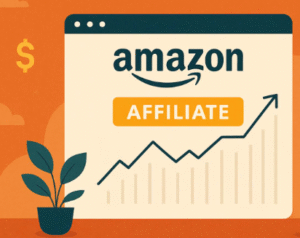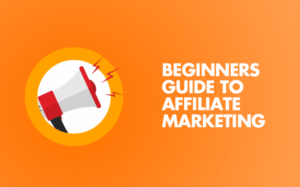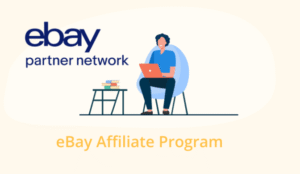
You’ve laid the groundwork: chosen your niche, researched profitable products, and optimized your blog for search engines. Now comes the art of affiliate marketing – crafting content that not only attracts readers but also inspires them to take action. Engaging content is the bridge between a casual visitor and a successful purchase, directly impacting your conversion rates and, ultimately, your earnings.
This article will delve into the strategies for writing compelling and high-converting content for your eBay affiliate blog, focusing on how to connect with your audience and guide them towards a purchase.
I. Focus on Solutions and Product Benefits
When promoting products, it’s crucial to remember that people don’t just buy products; they buy solutions to their problems or better versions of themselves. Simply listing features will rarely compel a purchase. Instead, your content should paint a vivid picture of the improved reality the product can bring.
- Shift from Features to Benefits: Instead of stating “This camera has 4K resolution,” explain the benefit: “Capture unforgettable moments with stunning 4K clarity, transforming your family videos into professional-grade masterpieces.” This approach resonates more deeply with readers because it addresses their desires and pain points.
- Address User Problems: Frame your content around common problems your target audience faces and how the eBay products you’re promoting can solve them. For instance, if your niche is home organization, instead of “This storage unit has three drawers,” try “Declutter your living space effortlessly with this sleek three-drawer storage unit, bringing calm and order to your home.”
Focusing on benefits is a fundamental principle of persuasive copywriting, directly influencing conversion rates by appealing to the reader’s emotional and practical needs.
II. Storytelling and Personal Experience
Authenticity is a cornerstone of successful affiliate marketing. Content becomes more relatable and illustrates value tangibly when it incorporates storytelling and personal experiences.
- Share Your Journey: Don’t hesitate to share your own experiences with the products you’re promoting. Did a particular gadget save you time on a busy day? Did a service help you overcome a challenge? These real-life applications help your audience envision themselves benefiting in the same way.
- Create Relatable Scenarios: Even if you haven’t personally used every product, you can create scenarios that your readers can easily imagine themselves in. For example, if reviewing a camping tent, describe a hypothetical camping trip and how the tent’s features (e.g., quick setup, weather resistance) would enhance the experience.
- Build Trust: A genuine story about how a product helped solve a problem or improved your life is far more convincing than a dry review. This authenticity is key to building trust with your audience, which is paramount for long-term affiliate success. When readers trust your recommendations, they are more likely to click your affiliate links.
III. Clear and Prominent Calls to Action (CTAs)
Even the most compelling content needs a clear directive. Calls to Action (CTAs) are essential for guiding your readers to the next step – clicking your affiliate link and making a purchase.
- Be Direct and Obvious: Use clear and straightforward buttons or graphics for your CTAs, such as “Buy Now,” “Check Price on eBay,” or “View Product Details”. These should be easily noticeable and leave no doubt about where readers should click for more information or to complete a purchase.
- Strategic Placement: Place CTAs strategically throughout your content, not just at the end. Consider placing them after you’ve introduced a problem and presented the product as a solution, or after a compelling benefit has been highlighted.
- Create Urgency/Value: Use action-oriented language and power phrases that resonate with your target audience. For example, “Unlock Your Potential Now” or “Don’t Miss Out on This Deal.” Numbers and specifics in your CTAs can also be highly effective, such as “Get 10% Off Today!”.
IV. Natural Affiliate Link Integration
The goal is to integrate affiliate links seamlessly into your content, making them a natural part of the reader’s journey rather than an intrusive advertisement.
- Promote Products You Believe In: Avoid stuffing your blog with random affiliate links. Instead, focus on products you genuinely believe in and would recommend to a friend without hesitation. This authenticity will shine through and build credibility.
- Contextual Linking: Integrate links naturally within the text where they are relevant and add value to the reader. For example, if you’re discussing the benefits of a specific smartphone, link directly to that phone’s listing on eBay.
- Vary Link Types: Utilize various link types provided by EPN, such as text links, banner ads, or widgets, depending on what best fits your content and design. However, ensure you don’t modify the links after generating them with EPN’s tools, as this can affect tracking.
- Don’t Overdo It: While important, avoid overwhelming your readers with too many links. A balanced approach ensures readability and maintains trust. The focus should always be on providing value first.
Conclusion
Crafting engaging and high-converting content is an ongoing process that requires a deep understanding of your audience and a commitment to providing genuine value. By focusing on solutions and benefits, incorporating authentic storytelling, utilizing clear calls to action, and integrating affiliate links naturally, you can transform your blog posts into powerful conversion machines. Remember, the ultimate goal is to build trust and help your readers make informed purchasing decisions, which will lead to sustained success in your eBay affiliate marketing journey.



